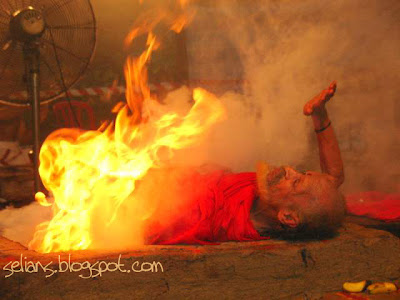Nikon SB-900
Nikon SB-900 Tips
Preventing Overheating - 4 explanation and solution videos by Lilkiwiguy87
Part 1 - (view in HQ on YouTube)
Part 2 - (view in HQ on YouTube)
Part 3 - (view in HQ on YouTube)
Part 4 - (view in HQ on YouTube)
What follows is a brief summary of the points raised in the videos.
Overheating is not a design flaw.
Firmware update 5.0.2 does not prevent overheating, since it only tweaks flash intensity during continuous shooting with the SB-900 is in i-TTL mode. See the firmware 5.0.2 update notes for Mac & Windows.
The first factor is the type of batteries used. Rechargeable AA batteries have a voltage of 1.2V (Volts), which is lower than the 1.5V that standard, non-rechargeable batteries have. In other words, rechargeable batteries have a lesser capacity in powering the SB-900 compared to standard batteries. A comparison test was conducted with the SB-900 firing at full power (Manual mode, 1/1) using rechargeable Duracell 1.2V, 1800mAh batteries vs Duracell Coppertop 1.5V, 2200mAh (non-rechargeable) alkaline batteries. The result of that test shows the recycling time to be much shorter with the Coppertop batteries. If the photographer continues to shoot without allowing the batteries to recycle, the batteries will start to overheat.
Recommended standard batteries are Duracell Coppertop (Alkaline), Energizer Ultimate Advanced Formula (Lithium) and Kodak MAX (Alkaline). Do not mix different battery types or brands.
Rechargeable batteries can be used, provided the SB-900 isn't subject to intense, continuous bursts, for instance, when shooting 200 images or more per hour.
The second factor is if the photographer selects Auto Area AF mode on the camera. This triggers the use of all three AF assist illuminators on the SB-900 (the older SB-800 only had a single autofocus assist). This increases the consumption of battery power, and if Autofocus is heavily activated, then overheating of the battery becomes more likely. The solution is to use Single Point AF, or Dynamic Area AF, when shooting in dim lighting conditions.
When the SB-900 is set to any of the automatic modes (TTL-BL, AA, TTL), several pre-flashes are emitted for exposure calculations. This again consumes battery power. Set the flash to manual mode if the lighting conditions is such thatrecalculation of exposure with each shot isn't required.
When more power is needed than can be supplied by the AA batteries, invest in an external battery pack such as the Nikon SD-8A, Nikon SD-9, or Quantum Turbo. This is presented as the final solution for heavy shooting requirements.
External battery packs contribute both increased battery capacity and voltage (up to 15V with the Nikon SD-8A, and 18V with the Nikon SD-9 or Quantum Turbo). Additionally, recycling time can be cut by 60 ~ 70%. The video then goes into detail on the use of the Nikon SD-8A battery pack. A demonstration effectively shows how much recycling time is shaved off when the SD-8A is used, with the SB-900 firing at full, 1/1 power.
It was also noted that the Nikon SD-9 High Performance Battery Pack is compatible only with the SB-900, while the Quantum is compatible with the SB-800 and SB-900 (but not with the SB-600).
Read a good comparison of the SD-8A vs SD-9.
The SB-900 needs to be kept within operating temperatures of 27°F and 109°F (-3°C to 41°C).
If the batteries become too hot, remove them and allow the batteries to cool for 10 to 15 minutes. Remove the batteries if the SB-900 is not used for two weeks or more.
A Nikon "Water Guard" can be installed to seal the area of contact between the SB-900's foot and the hot shoe mount. The correct model depends on the DSLR you're using, WG-AS1 (Nikon D3), WG-AS2 (D300), and WG-AS3 (D700).
Other maintenance tips include keeping the SB-900 clean with Formula 409.
Finally, if one really requires high-powered flash units for professional work, the SB-900 might not be the answer. Instead, get the Quantum Qflash T5D or T5D-R.
source: http://links.dpnotes.com/nikonsb900.php


Comments